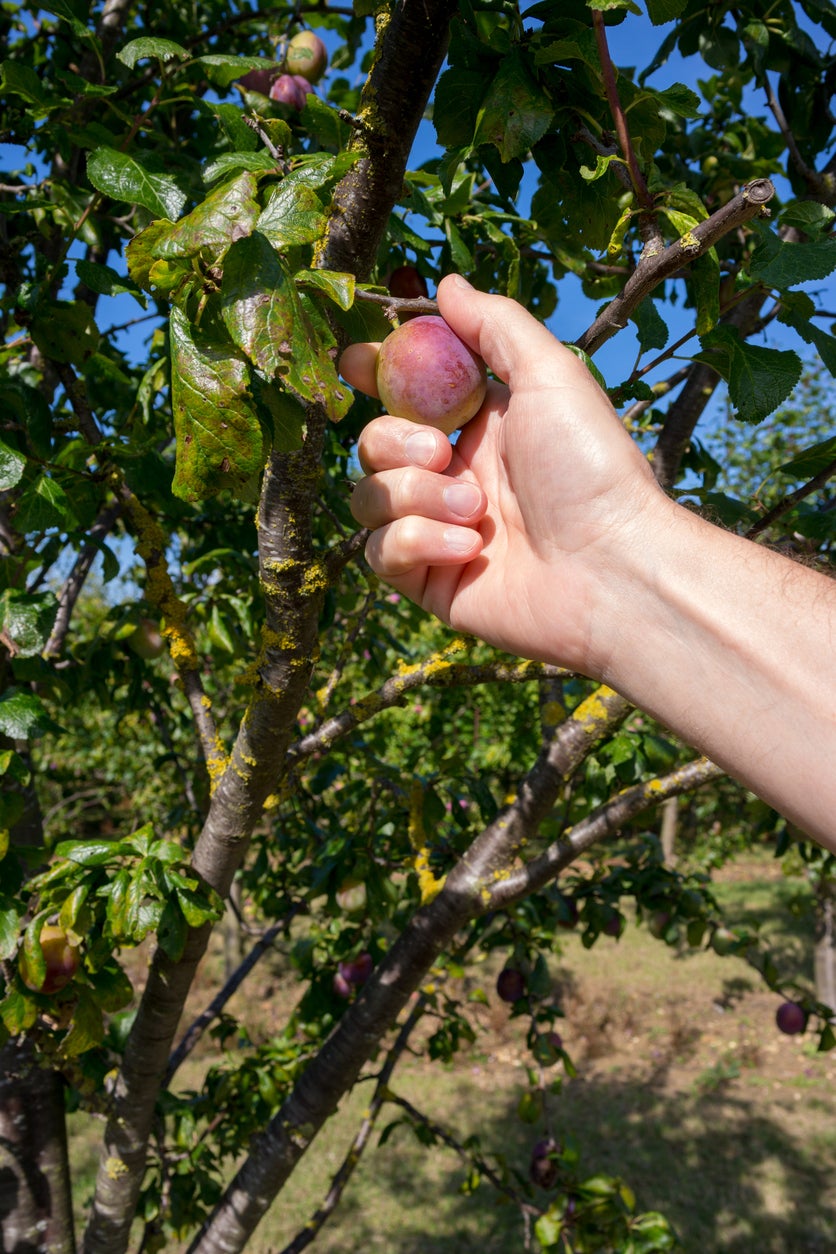Tips For Growing Marjorie’s Seedling Plum Trees


Marjorie's seedling tree is an excellent plum for smaller gardens. It needs no pollinating partner and produces a tree full to the brim with deep purple-red fruit. Marjorie's seedling plums get sweeter as they stay on the tree, a bonus for home gardeners who can wait, unlike commercial growers who pick early. If you love plums, try growing Marjorie's seedling plum as a low maintenance, heavy producing fruit tree.
About Marjorie's Seedling Plum Trees
Marjorie's seedling plum trees will produce copious amounts of sweet-tart fruits for canning, baking, or fresh eating. This variety is known for its intense flavor when allowed to fully ripen on the tree. The fruits are beautiful with deep color that turns almost purple black when mature. It is a perfect tree for a small garden because you don't need another plum variety for it to set fruit. Marjorie's seedling plums are small fruits with deeply yellow, juicy flesh. The trees can grow 8 to 13 feet (2-4 m.) tall with a bushy habit, unless trained. There are several seasons of interest with this plum tree. In early spring, a cloud of pearly white flowers appear, followed by the deeply hued fruit and finally, purple-bronze foliage in fall. It is in flowering group 3 and considered a late season plum with fruit arriving in September to October. Marjorie's seedling tree is resistant to most common plum diseases and is a reliable producer. It has been around in the U.K. since the early 1900's.
Growing Marjorie's Seedling Plum
Marjorie's seedling is an easy plum tree to grow. These trees prefer cool, temperate regions and well-draining, sandy soil. Acidic soil with a pH range of 6.0 to 6.5 is ideal. The planting hole should be twice as wide and deep as the root mass and well worked. Water the soil in well and keep new trees moist as they establish. Water once per week deeply, or more if the temperatures are high and no natural precipitation occurs. Prevent weeds around the root zone. Use about an inch (2.5 cm.) of organic mulch to accomplish this and also to conserve moisture. Young trees should be staked to help them develop an erect trunk.
Seedling Plum Tree Care
Prune in summer to keep an open center and sturdy scaffold of branches. You may also have to tip prune to thin heavy bearing branches. Plums don't generally need much shaping but they can be made into espaliers or trained to a trellis. Start this early in the plant's life and expect a delay of fruiting. Fertilize in spring before the flowers open. If deer or rabbits are common in your area, erect a barrier around the trunk to prevent damage. These plums will usually bear in two to four years after planting. Fruit is prolific so be ready to share!
Sign up for the Gardening Know How newsletter today and receive a free copy of our e-book "How to Grow Delicious Tomatoes".

Bonnie Grant is a professional landscaper with a Certification in Urban Gardening. She has been gardening and writing for 15 years. A former professional chef, she has a passion for edible landscaping.